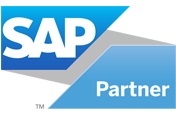Unable to find what you're searching for?
We're here to help you find itBC410 - Programming User Dialogs with Classical Screens (Dynpros) Course Overview
The BC410 - Programming User Dialogs with Classical Screens (Dynpros) certification is a professional credential that validates an individual's ability to use advanced programming techniques in SAP-regulated scenarios. It verifies expertise in systemic dialogue programming with the transaction ABAP HR. This certification equips professionals to construct and maintain dialect interfaces in the ABAP framework, design module pools, and build complex screen sequence controls. It is widely used by industries to enhance business functionality and streamline operations. Securing this certification signifies a competent understanding of handling tables in ABAP Dictionary, managing subscreens, tab strip controls, and table controls, which are integral for SAP professionals.

Purchase This Course
USD
View Fees Breakdown
| Flexi Video | 16,449 |
| Official E-coursebook | |
| Exam Voucher (optional) | |
| Hands-On-Labs2 | 4,159 |
| + GST 18% | 4,259 |
|
Total Fees (without exam & Labs) |
22,359 (INR) |
|
Total Fees (with exam & Labs) |
28,359 (INR) |
♱ Excluding VAT/GST
You can request classroom training in any city on any date by Requesting More Information
♱ Excluding VAT/GST
You can request classroom training in any city on any date by Requesting More Information
Screen sequence controls are configurations used in software applications to manage the flow and order of screens presented to a user during a session. These controls define the sequence in which various screens appear, ensuring a logical progression and guiding the user through processes effectively. Essentially, they enhance usability and efficiency by organizing the interaction according to predefined rules. This ensures users experience a coherent journey, particularly important in complex systems where navigating between different functionalities smoothly is crucial for effective operation.
ABAP HR is a module in SAP that integrates human resource management and development within the broader ABAP programming environment. This specialized area focuses on automating and managing employee-related processes like payroll, recruitment, and performance evaluations. Professionals can enhance their skills in this field by seeking ABAP HR-specific training and certifications, such as the BC410. BC410 training is designed to provide a comprehensive understanding of ABAP programming in the HR context, and obtaining BC410 certification can validate expertise and potentially lead to career advancement in the field. Note that BC410 certification cost and availability details can usually be found online.
ABAP Dictionary is a central repository in SAP systems where developers can define and manage data structures like tables, views, data types, and indices. It ensures consistency, integration, and data integrity across the SAP landscape by standardizing data definitions. This tool is essential for creating and maintaining a structured environment in SAP development, making sure that data is stored efficiently and is accessible to applications and users. ABAP Dictionary is a key component covered in BC410 training, which prepares professionals for BC410 certification, enhancing their ability to develop and maintain robust SAP systems.
Subscreens are specialized components within user interfaces in software systems, which allow for the organization and display of related functionalities in a more structured manner. They help in breaking down complex systems into navigable, smaller sections that can be managed or viewed separately. This modularity enhances usability and maintains clean separation of tasks or processes, thereby improving the overall user experience. Subscreens can be particularly crucial in large applications, where user interface clarity is essential. They enable easier updates and scalability by isolating system functionalities into distinct units.
Tab strip controls are user interface elements in software development that enable the organization of content into separate tabs. This design allows users to easily navigate through different views or data sets within the same window, enhancing usability and efficiency. Typically used in settings such as web applications and various software interfaces, tab strips help in creating a clean, accessible way to present multiple panels of information without overwhelming the user with too much data at once.
Table controls in SAP are used to display, manage, and edit data in a tabular format within SAP applications. Specifically designed for interactive use, table controls allow users to modify or enter dates directly within rows and columns, akin to spreadsheets. These controls are programmable, allowing developers to specify actions that will trigger when data is changed or checked. Understanding and utilizing table controls efficiently is essential for users managing large datasets or entering data repetitively, and is often a focus in BC410 training, which enhances proficiency in programming SAP's user interface.
Module pools are a type of programming in SAP systems used for developing applications that have a graphical user interface (GUI). Specifically designed for transaction-based applications that interact with users, module pools (or dialog programs) manage the data exchange between the GUI screens and the database. They consist of various modules that process input from the user interface, perform logical operations, and ensure outputs are returned back to the screen. This makes module pools crucial for creating customized transactional and interactive applications within the SAP environment.



